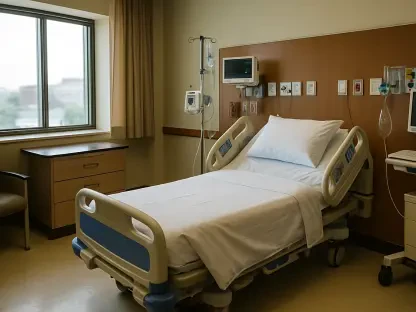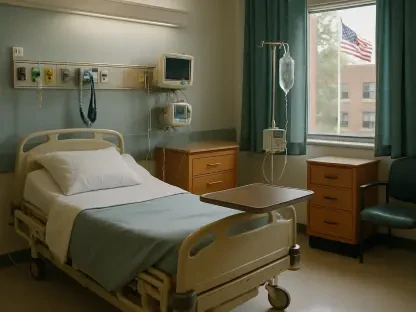The adoption of telehealth services surged dramatically during the COVID-19 pandemic in 2020. Pre-pandemic, a mere 12% of the population engaged with telehealth services. This figure skyrocketed to nearly half (46.7%) of adults in California, including those in Santa Clarita Valley, as telehealth proved to be effective. The current momentum is no longer driven by the pandemic but rather by the inherent benefits and efficiencies that telehealth offers. More doctors are incorporating virtual visits into their practice, and a growing number of patients are opting for this mode of healthcare delivery, leading to several positive impacts on the system.
Mental Support
Telehealth is revolutionizing mental health support by making it more accessible. Approximately 17.5% of people are using telehealth for mental or emotional health support, including senior citizens. This method allows individuals to consult with counselors or therapists from their own homes, creating a safe and comfortable environment. This privacy alleviates the worry of encountering acquaintances in waiting rooms and allows for more flexibility in scheduling.
Moreover, the convenience of telehealth means that patients can access mental health services more frequently and consistently. This regularity is crucial for effective mental health treatment, as it ensures continuous support and monitoring. The ability to have therapy sessions from home also reduces the stigma associated with seeking mental health care, encouraging more people to seek the help they need. This approach ensures that individuals receive the care they need without the added stress of logistics, making it a transformative element in mental health care.
Specialist Access
Previously, accessing specialists such as dermatologists or cardiologists often involved long waits and travel to Los Angeles. Telehealth has mitigated these barriers, enabling patients to connect with top specialists via video calls without the need for extensive travel. This rapid access to specialists ensures timely treatment of health issues, preventing them from escalating into serious conditions. For those in the Santa Clarita Valley, this has been a game-changer in accessing high-quality care without significant delays.
The convenience of telehealth also means that patients can receive second opinions more easily, which can be crucial for diagnosing and treating complex conditions. This increased access to specialist care can lead to better health outcomes and greater patient satisfaction. Additionally, telehealth allows for more efficient use of specialist time, as they can see more patients without the constraints of physical location. This shift in healthcare delivery ensures that residents have access to a broad range of expert opinions and treatments, enhancing overall health outcomes in the community.
Cost Benefits
Telehealth significantly reduces healthcare costs for both patients and providers. Patients save on travel expenses and do not need to take extensive time off work, as virtual visits can be scheduled during convenient times such as lunch breaks. For providers, telehealth reduces the need for physical office space and additional staff. Additionally, Medicare and Medi-Cal now cover telehealth visits, making them even more affordable. This shift to virtual healthcare can save patients hundreds of dollars each month and make quality care more accessible.
The cost savings extend beyond just the immediate expenses. By facilitating early intervention and regular monitoring, telehealth can help prevent costly emergency room visits and hospitalizations. This proactive approach to healthcare not only saves money but also improves patient outcomes by addressing health issues before they become severe. In Santa Clarita Valley, this means a more sustainable healthcare system that provides efficient and economical solutions for the community’s health needs.
Disease Management
For individuals with chronic conditions like diabetes or hypertension, telehealth facilitates regular monitoring and management. Patients can share vital health metrics such as blood sugar levels and blood pressure readings with their doctors remotely. This immediate data sharing allows for prompt adjustments in treatment plans, reducing the need for emergency room visits and promoting better overall health. This level of real-time monitoring is particularly crucial in managing chronic conditions, where timely interventions can prevent complications.
Telehealth also enables more personalized care plans, as doctors can monitor patients’ progress more closely and make real-time adjustments. This level of care is particularly beneficial for managing chronic conditions, as it helps to prevent complications and improve quality of life. The convenience of telehealth means that patients are more likely to adhere to their treatment plans, leading to better long-term health outcomes. Regular virtual consultations ensure that any deviations from the treatment plan are promptly addressed, fostering a comprehensive approach to chronic disease management.
Senior Care
Telehealth provides significant benefits for the elderly, enabling them to receive medical care without the burdens of travel. Seniors who find it difficult to attend in-person appointments can consult with their doctors from home. Family members can also participate in video calls, aiding in the coordination of care and medication management. This frequent and convenient access to healthcare professionals helps in maintaining the health of older adults and ensuring that in-person visits are reserved for urgent needs.
The ability to have regular check-ins with healthcare providers through telehealth can help to catch potential health issues early, preventing them from becoming serious. This proactive approach to senior care can lead to better health outcomes and a higher quality of life for older adults. Additionally, telehealth can help to reduce the sense of isolation that many seniors experience, as it provides a regular point of contact with healthcare professionals. In Santa Clarita Valley, this means a higher standard of care for one of the most vulnerable populations, ensuring that seniors receive consistent and compassionate medical attention.
Emergency Efficiency
Telehealth improves the efficiency of emergency rooms by allowing patients to consult with a doctor before deciding to visit the ER. Many conditions that seem urgent can be addressed through virtual consultations, reducing the influx of non-critical cases into emergency departments. This results in shorter wait times for true emergencies. For example, a sprained ankle can be managed through telehealth, allowing ER resources to be focused on more severe cases.
This triage system not only improves the efficiency of emergency care but also reduces the stress and anxiety associated with visiting the ER. Patients can receive timely advice and treatment for minor issues without the need for a potentially lengthy and costly ER visit. This approach has revolutionized the way emergency care is delivered, ensuring that patients in the Santa Clarita Valley receive prompt and appropriate medical attention.
Bottom Line
The use of telehealth services saw a significant rise during the COVID-19 pandemic in 2020. Before the pandemic, only 12% of the population utilized telehealth services, but this number surged to almost half (46.7%) of adults in California, including residents of Santa Clarita Valley. This increase was largely due to the effectiveness of telehealth. Nowadays, the momentum continues, not because of the pandemic but due to the inherent advantages and efficiencies telehealth provides. More healthcare professionals are integrating virtual visits into their routines, and an increasing number of patients are choosing this form of healthcare delivery. This shift has resulted in several positive impacts on the healthcare system, such as improved access to care, reduced travel time, and convenience for both patients and providers. Additionally, telehealth has shown to be cost-effective and efficient, offering timely consultations and reducing the need for physical space in medical facilities. Such benefits ensure that telehealth remains a vital part of healthcare.









